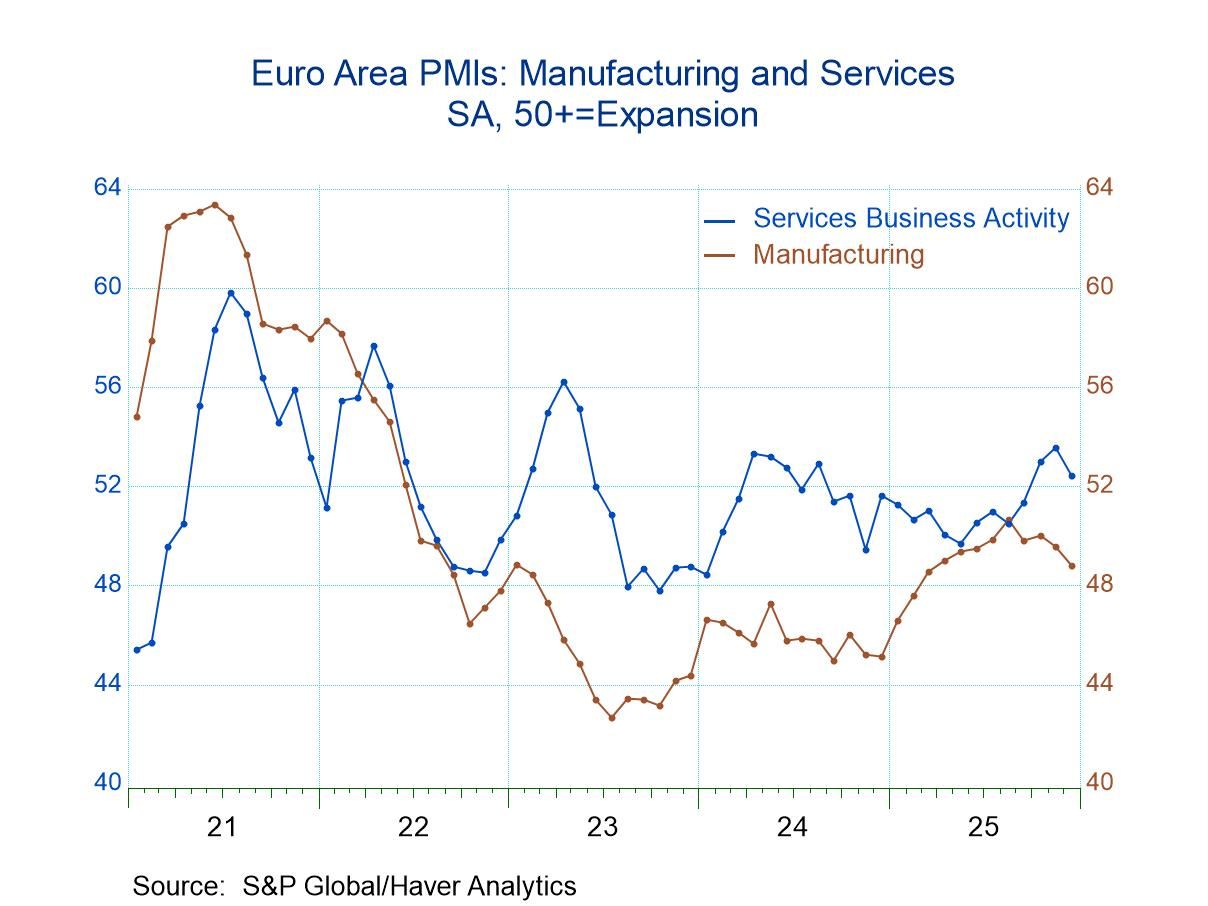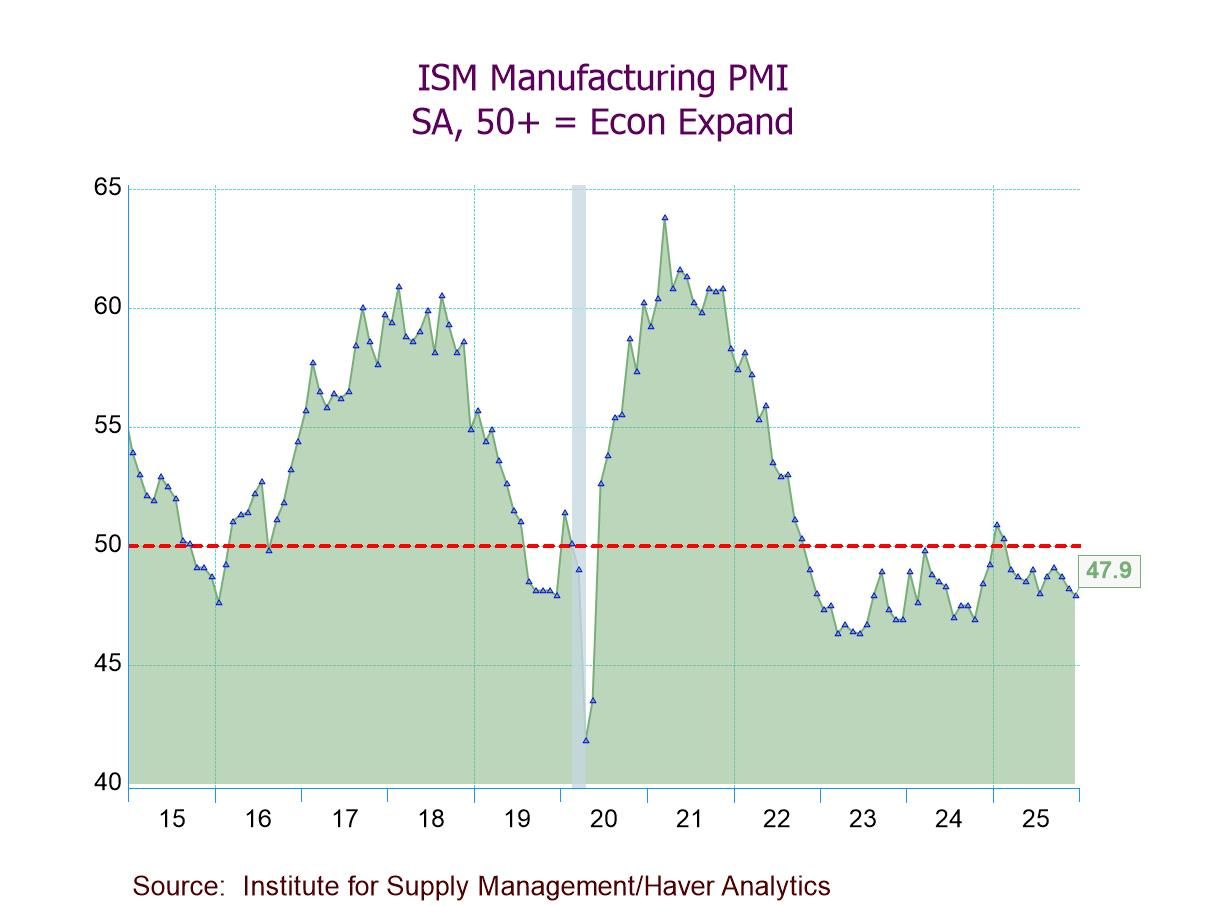Irish Inflation Trends Keep Pointing Lower

Ireland continues to produce good inflation news in April. The HICP index rose by 0.1% in April logging a 1.6% increase from a year ago, well within the target set by the European Central Bank for inflation in the entire Monetary Union. Ireland also reported a 0.3% increase in April for its domestic CPI gauge; that gauge is up 2.8% over 12 months. Ireland's CPI core fell by 0.1% in April and it's higher by 3.5% over 12 months. The annual rate difference between the inflation rate for the European Monetary Union inflation index known as the HICP, and Ireland's domestic CPI appears wide at 1.6% versus 2.8%; yet, both year-over-year changes are at 33-month lows. The domestic CPI core inflation rate is at a 27-month low. While these three gauges measure inflation in slightly different ways, it's quite clear that for the measure that each chooses to assess inflation, each has made a substantial reduction from where it has been and that all three gauges are showing substantial as well as ongoing inflation progress.
Different metrics but tracking the same forces However, since Covid stuck, the differences between the core and the HICP and HICP and CPI have become magnified. Much of that is because of the growing difference in inflation lags and developments between the core and the headlines when inflation accelerates due to different causes. Still, the CPI headline and the HICP headline are more inconsistent than they were prior to August 2021. In the earlier period, there would be a standard deviation between the headline readings of annual inflation of 0.2%; that has grown to 0.6% after August 2021. However, the difference has shown signs of declining recently. The correlation between the headline HIPC and core has actually improved in the Covid period. This reinforces the belief that inflation is a singular force being tracked by both methods with differences stemming from their methodologies and weights rather than there being different underlying inflation dynamics at work.
Sequential results Sequentially the ECB inflation measure, the HICP, rises by 1.6% over 12 months, falls at a 0.5% annual rate over six months and then rises at a modest 1% annual rate over three months. The Irish CPI gauge shows at a 2.8% year-over-year increase, a 0.6% annual rate rise over six months and a 1.6% annual rate gain over three months. Ireland's CPI core rate rises 3.5% over 12 months, at a 1.6% annual rate over six months and at a 2% at an annual rate over three months. All three gauges show six-month inflation below 12-month inflation as well as 3-month inflation higher than 6-month inflation but also 3-month inflation below the pace of its 12-month gain. So once again, we can look at different inflation measures and the absolute reading on inflation is going to be different depending on what we mix into the pot. Regardless of that, it appears that the overall inflation pressures in Ireland are consistent and behaving in a similar fashion regardless of which of these metrics we look at.
Inflation across categories The diffusion gauge for the domestic CPI, which looks at accelerations across the CPI categories, marks accelerations as the value of 1 and unchanged inflation as the value of 0.5. Summing these and presenting them are proportional results, produces a diffusion rating at 50% when inflation is accelerating and decelerating in equal proportions, a value above 50% when inflation is accelerating in more categories, and a value of below 50% when inflation is decelerating in more categories. Inflation diffusion for Ireland is at 33.3% over 12 months, 33.3% over six months, but rises to 54.2% over three months. This calculation shows us that 12-month inflation compared to 12-months ago is decelerating in nearly 70% of the categories; that, over six months compared to 12 months, inflation is also still decelerating in nearly 70% of the categories. But, over three months, the inflation rate accelerated in slightly over half of the categories. And that's not surprising. Look at how the headline inflation rate for the CPI and for the core performed over this period. Although the diffusion calculation doesn't necessarily agree in all cases with changes in the headline diffusion and the weighted inflation headlines show the same trends. Diffusion is a separate measure that looks at the breadth of the inflation trend by assessing whether inflation is rising or falling across the various categories and then toting up the results. The diffusion measure neither looks at the magnitude of the change in inflation nor imposes any weight across the categories; it is simply looking at the change in inflation across various categories.

Summing up Ireland's economy continues to struggle with growth. GDP is still declining, consumer spending remains modest, producer prices show slightly more pressure than what is being registering in the CPI. But the decline in inflation is present in all three of these major inflation metrics. And its path and force are also reinforced by assessing breadth using the diffusion indexes. Ireland looks like a case of successful inflation fighting where the new challenge for the economy is going to be to reestablish growth at this lower rate of inflation.
Robert Brusca
AuthorMore in Author Profile »Robert A. Brusca is Chief Economist of Fact and Opinion Economics, a consulting firm he founded in Manhattan. He has been an economist on Wall Street for over 25 years. He has visited central banking and large institutional clients in over 30 countries in his career as an economist. Mr. Brusca was a Divisional Research Chief at the Federal Reserve Bank of NY (Chief of the International Financial markets Division), a Fed Watcher at Irving Trust and Chief Economist at Nikko Securities International. He is widely quoted and appears in various media. Mr. Brusca holds an MA and Ph.D. in economics from Michigan State University and a BA in Economics from the University of Michigan. His research pursues his strong interests in non aligned policy economics as well as international economics. FAO Economics’ research targets investors to assist them in making better investment decisions in stocks, bonds and in a variety of international assets. The company does not manage money and has no conflicts in giving economic advice.




 Global
Global

